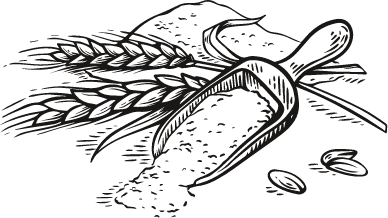
A real phenomenon on the other side of the Atlantic, the Paleo diet has many convinced ambassadors. The principle? Drawing inspiration from the diet of our ancestors in the Paleolithic period to rediscover the basics of nutrition.
The roots of the Paleo diet
The “Paleolithic” or Paleo diet is not a weight-loss programme but a way of eating. It is based on the hypothesis that was developed as early as 1985 by Dr Boyd Eaton, a medical anthropologist at Emory University in Atlanta, and then taken up in the late 1990s by Dr Loren Cordain, a professor in the Department of Health and Exercise Science at Colorado State University. Detailed in his book “The Paleo Diet”, it was then popularised by a host of celebrities.
The principle? According to Dr Boyd Eaton, the nutritional needs of humans are determined by their genes. As these genes have hardly changed over the last 40,000 years, the diet of our Paleolithic ancestors thus remains the nutritional benchmark. And yet people in the Paleolithic period did not know about agriculture, fed exclusively on what nature offered them, used neither salt nor sugar and did not consume pesticides, GMOs or antibiotics.
The Paleo diet therefore aims to restore the natural balance of hunter-gatherers by getting as close as possible to their diet. Based on the results of analyses of bones found in East Africa, the Paleo plate was therefore two-thirds plant foods and one-third animal foods, with no industrial or processed foods. According to Dr Loren Cordain, it was richer in protein, fibre and nutrients than a contemporary Western diet, but was less rich in carbohydrates, sodium and saturated fats.
What can you eat on a Paleo diet ?
The Paleo diet excludes all non-natural and processed products. Fruit and vegetables, meat, eggs and fish are the basic Paleo foods. Be careful, however – each one is subject to strict selection criteria: fruit and vegetables must be in season, animal products must come from free-range animals, and lean meat must be eaten to match the nutritional properties of game at the time. And all foods should ideally be organic, in order to avoid substances that did not exist in the Paleolithic period!
The most disputed specificity of the Paleo diet is total avoidance of cereals and legumes of any kind. Dairy products such as milk, yoghurt, butter and cheese are also excluded. Industrial foodstuffs – from crisps to pizzas, sauces and biscuits – are completely banned. And while potatoes can be eaten in moderation, salt should in principle disappear.
Is it easy to adopt a Paleo diet ?
Paleo menus are low in salt, gluten-free, unprocessed and rich in nutrients. In return, they offer little diversity and impose a major change of eating habits. The Paleo diet is considered a restrictive diet that is often difficult to follow and is sometimes monotonous. It is incompatible with a vegetarian or vegan diet, is unsuitable for children and remains the subject of divided opinions within the scientific community. The conclusion? If you decide to look further into the matter, call on a nutritional specialist who will be able to adapt it to your specific needs to avoid any health risks.








